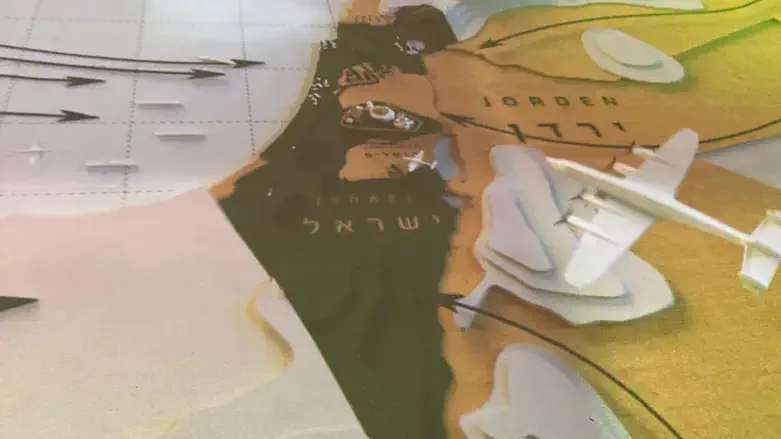
Visitors to the recently opened "Museum of the Jewish People" were surprised to find that the map of the country presented in a film about the "Jewish story" from the days of Abraham to the present, including the immigration from the Diaspora, omitted the territories of Judea and Samaria.
The museum's website states that "the museum seeks to provide the next generation with the key to understanding their Jewish identity, to strengthen their sense of belonging to the Jewish people, to deepen the bond between Jews in Israel and Jews around the world, to foster a sense of pride in their Jewish heritage, in the achievements of the Jewish people throughout the ages and in their contribution to the world, and to allow visitors from around the world to get to know the fascinating story of the Jewish people and to appreciate their uniqueness."
The Museum of the Jewish People at Beit Hatfutsot, founded as the Diaspora Museum in 1978 thanks to the vision of Nahum Goldmann, President of the World Jewish Congress (1954-1977), is located on the campus of Tel Aviv University. It is a "not-for-profit" corporation (NGO). In 2005, the Knesset passed the Beit Hatfutsot Law, which defines it as "the national center for the communities of Israel in the land and abroad."
The museum commented "This is an error. No one thinks that Judea and Samaria are part of Jordan - not even the Jordanians, who renounced their sovereignty in 1988. The matter is being addressed."
The Im Tirtzu movement said: "The Museum is funded in part by the State of Israel and is not the private property of the members of the board, whatever their political views may be. It is inconceivable that a region under Israeli control since 1967 and before that for millennia with a Jewish presence, should not be considered part of the country in such a museum. The matter should be rectified immediately."
